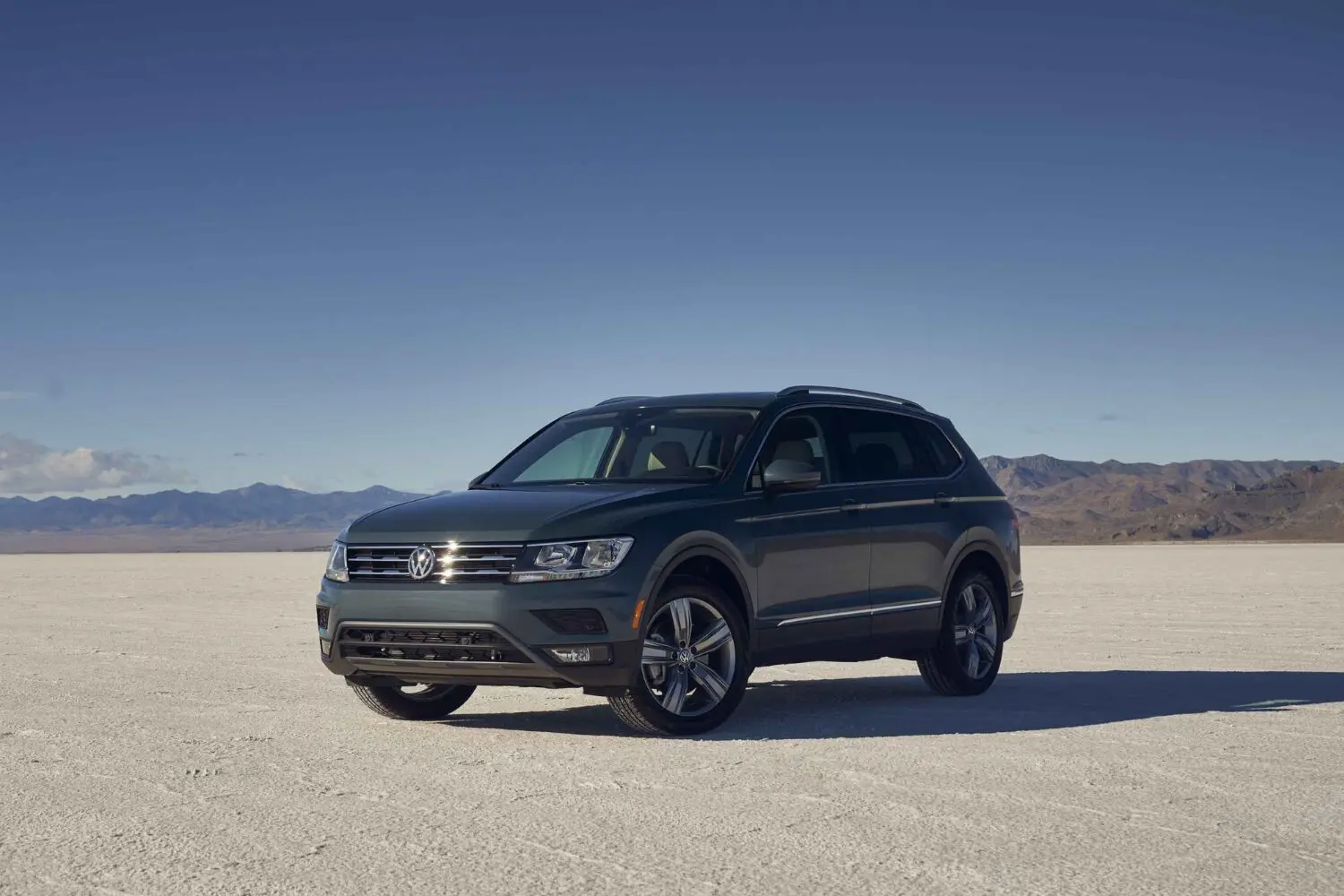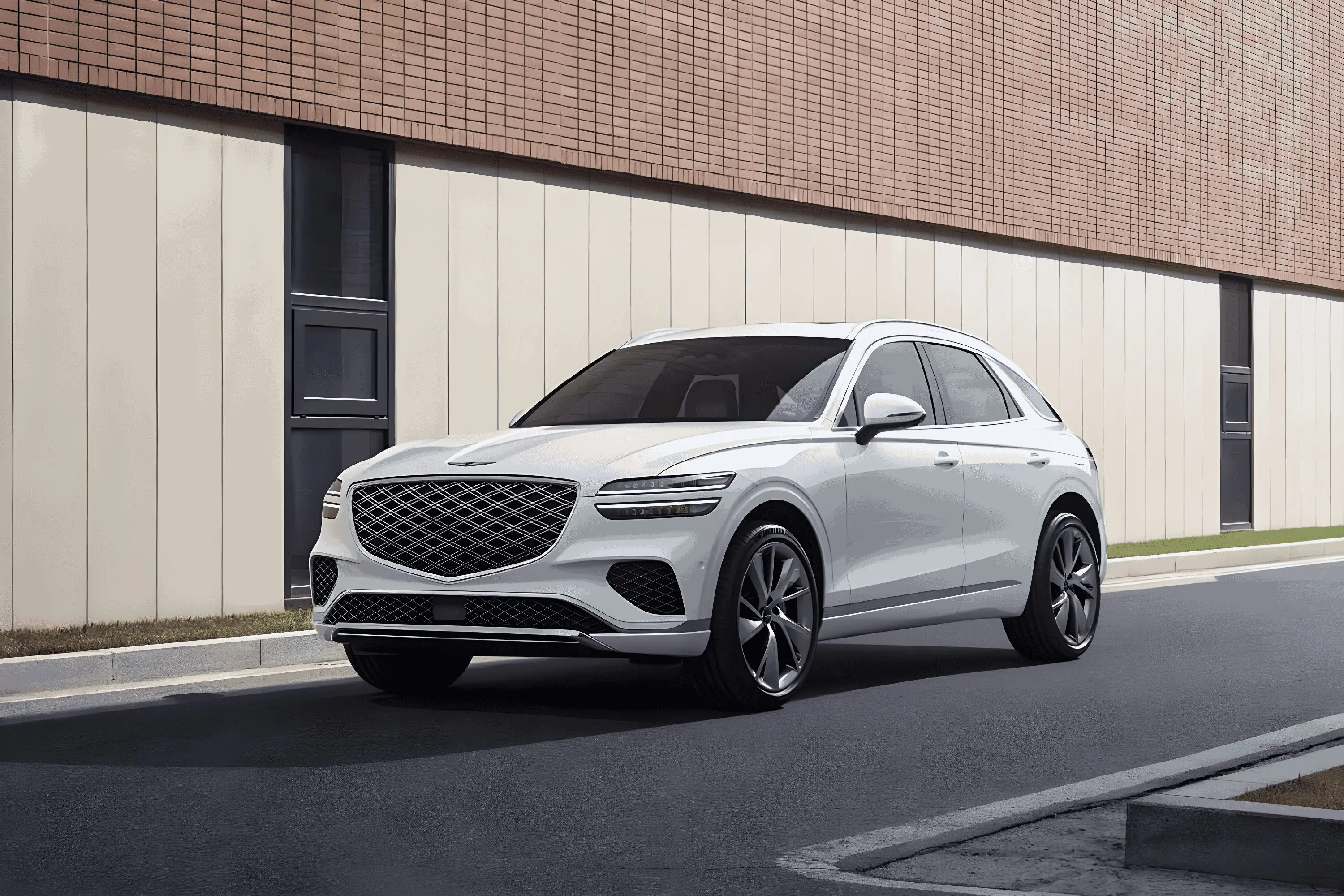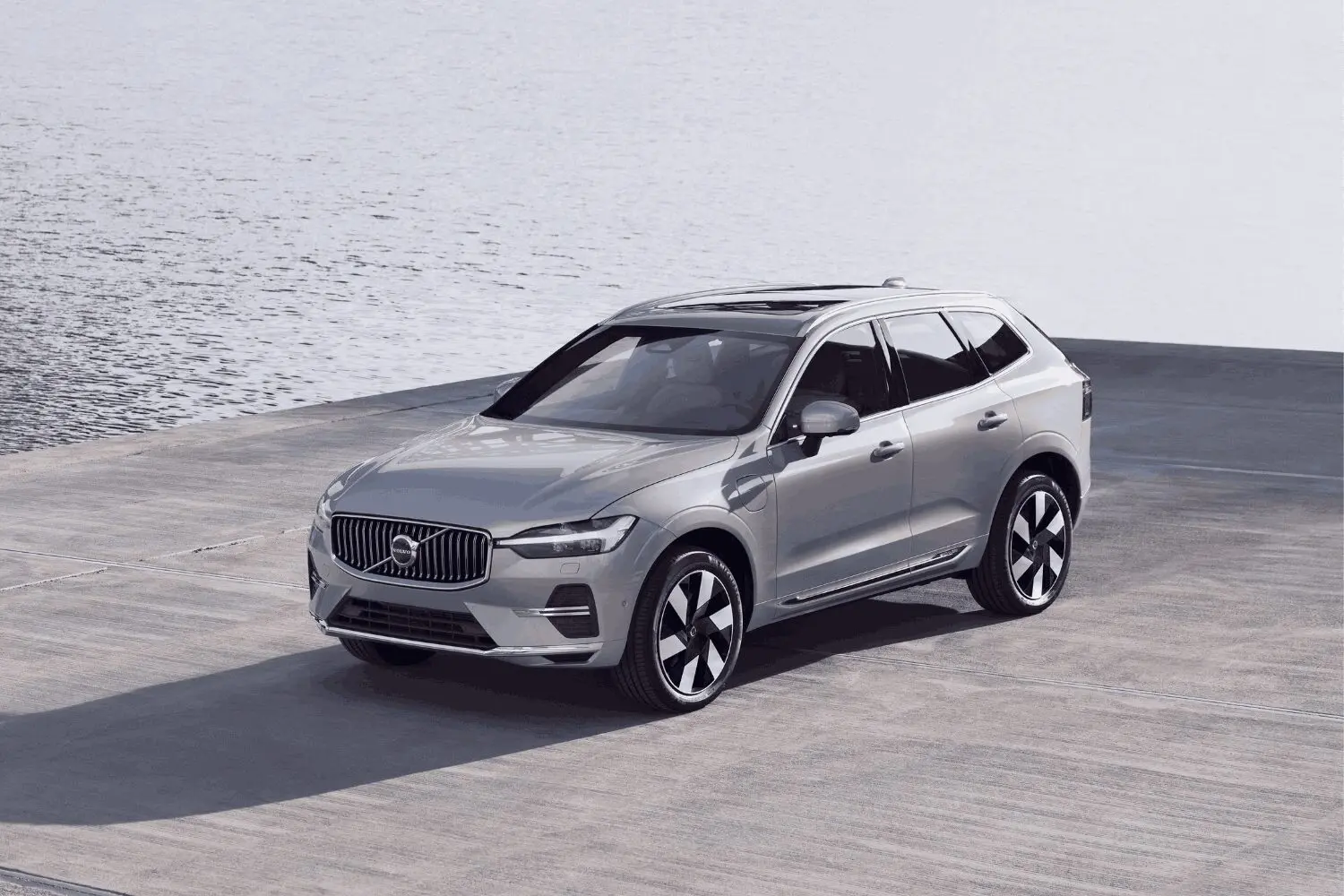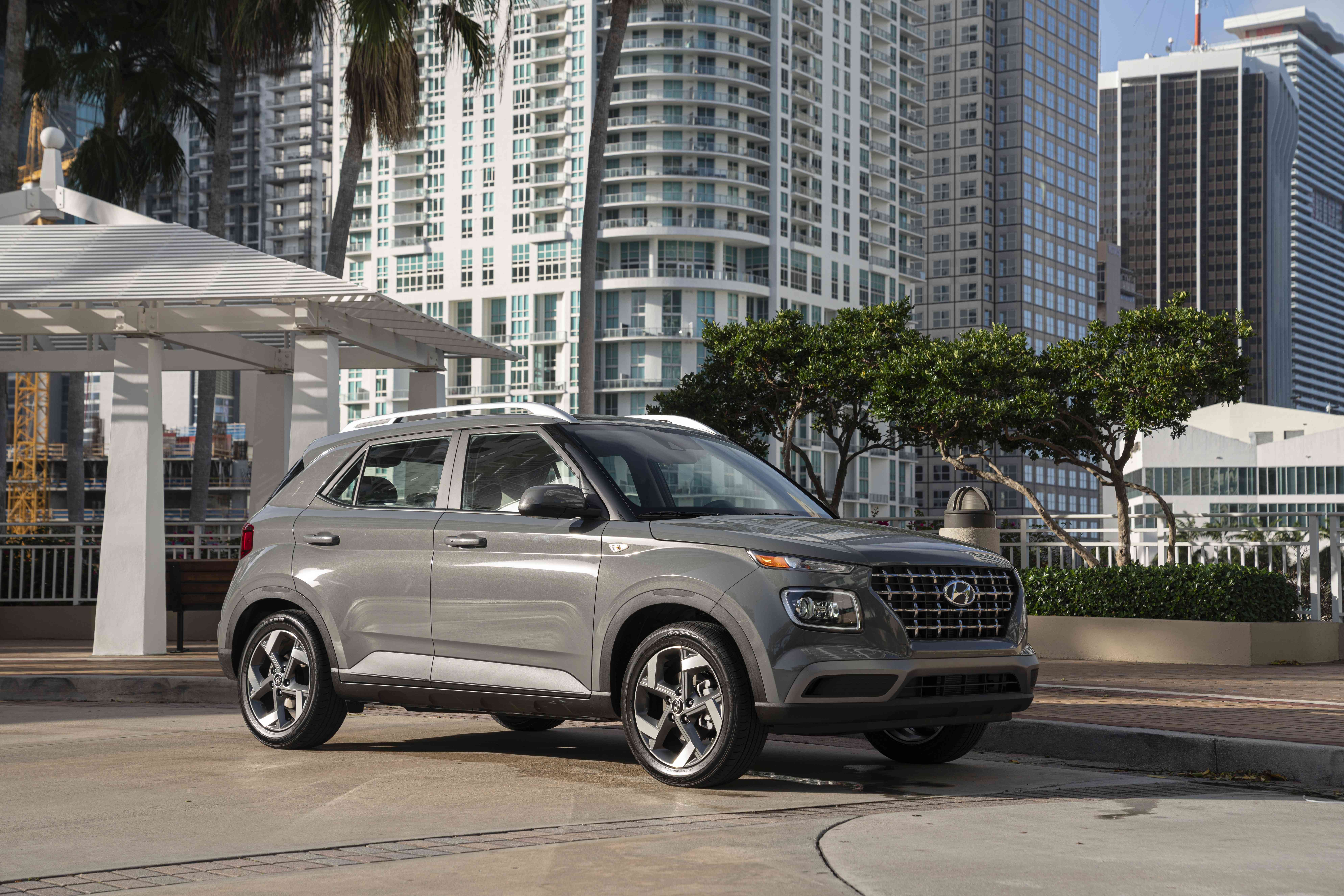
Price: $21,295 - $24,545
8 /10
Rating
Pros
- Affordable starting price
- Compact urban maneuverability
- Standard advanced safety features
Cons
- Weak engine performance
- No all-wheel drive option
- Basic interior materials
Overview: 2024 Hyundai Venue
Affordable doesn’t have to mean basic; this little crossover proves it. With a base price hovering around $21,000, it’s one of the cheapest vehicles in the compact SUV segment, yet it packs decent-level equipment like forward collision-avoidance assist and lane-keeping assist. During a week of errands and commutes, the 121-hp four-cylinder felt adequate for urban environments, though merging or passing maneuvers required patience—consider it a pragmatic choice, not a thrill ride. The interior leans simple but innovative, with intuitive controls and a surprising amount of space for its tiny footprint.
It struggles against competitors like the Toyota Corolla Cross, which offers peppier engines and cushier cabins. While the Venue nails excellent value for budget-conscious shoppers, its features list skips luxuries like heated seats or premium audio—common in pricier new vehicles. Still, I appreciated its honest approach: no fake engine notes or flashy gimmicks, just a straightforward entry point into Hyundai’s lineup. Parking in tight spots was a breeze, and the upright style feels fresher than the boxy Mazda CX-30.
Hyundai’s focus on modern times is shown in the tech suite, which includes wired Apple CarPlay and a crisp touchscreen. But the cabin materials reflect the price—hard plastics dominate, and road noise creeps in at highway speeds. For city dwellers prioritizing money over bells and whistles, though, it’s a winner. Think of it as the Hyundai Tucson‘s kid sibling: smaller, scrappier, and ideal for navigating crowded streets without draining your wallet.
What's New in the 2024 Hyundai Venue?
Hyundai’s entry-level crossover gets subtle but meaningful tweaks this year. The base SE trim now includes keyless entry and push-button start—a welcome upgrade I noticed while juggling groceries in a cramped parking lot. Higher models like the SEL gain exclusive perks, including a six-speaker audio system that delivers clearer podcasts (though bass-heavy tracks still struggle). New USB ports in the second row make backseat charging less of a scavenger hunt, a small win for families. While fancier tech like wireless charging hasn’t trickled down yet, the 2024 updates focus on practicality over flash, keeping the Venue competitive in the budget fray.
Pricing, Trim Levels, and Best Choice
Starting at $21,295, the base model keeps things straightforward with denim fabric upholstery and a no-frills five-seat layout—ideal for commuters prioritizing price over perks. Stepping up to the mid-tier Limited trim (around $24,545) adds 17-inch wheels and a bolder denim exterior with a white-painted roof, though I wish heated front seats were included for chilly mornings. The Limited strikes the best balance for most buyers, especially if snagging a drive-away deal during promotions.
Hyundai’s three trims cater to different priorities: the base SE suits inflation-weary wallets, while the Limited appeals to design-focused shoppers. Avoid the more expensive models unless you have a strong affinity for the dark blue exterior or require the convenience of an automatic transmission. Compared to the Hyundai i30 hatch, the five-door compact SUV feels roomier, but its on-road costs and options like a white-painted roof add up quickly. If cargo space matters, cross-shop the Kona SUV—it’s pricier but more versatile.
Powertrain, Transmission, and Driving Dynamics
The 1.6-liter four-cylinder petrol engine delivers 121 horsepower—enough for urban runabouts but strained on 10% grades or freeway on-ramps. During a weekend drive, merging at 70 MPH required flooring the pedal, sending the IVT (Intelligent Variable Transmission) whirring near 4,000 RPM. While the nimble size and reactive steering make weaving through traffic effortless, the torsion beam suspension transmits every pavement crack into the cabin, and vibrations grow noticeably above 60 MPH.
Hyundai’s electric-assist steering feels touchy at low speeds but firms up nicely for steady lane control. Pushing the front-wheel drive setup through corners reveals a chassis tuned for practicality, not play—think more 20-year-old Prius than a playful hatch. Still, the shrunken footprint pays off in tight parking garages, and the MacPherson struts handle potholes better than expected. If you prioritize agile handling over performance zone thrills, it’s a competent urban runabout, though road trips test its small hatch composure.
Fuel Efficiency and Driving Range
Hyundai’s estimated 29 mpg city and 33 mpg highway ratings held up during my test drive with the IVT automatic. The manual-equipped SE trim sees slightly lower figures (27/31 mpg), but enthusiasts may find the trade-off worthwhile for its engaging shifts. The 1.6-liter engine sips regular unleaded (no need for 91-octane here), and a 45-liter fuel tank means fewer refills—I logged 345 miles between fill-ups, mostly highway. Compared to the Nissan Kicks, which edges ahead with 36 mpg, the Venue isn’t class-leading but stays practical for urban runabouts.
It shines in the real-world range: Hyundai’s 342-373-mile claim aligns with mixed driving. I reached backroads at 60 mph and achieved nearly 388 miles on a single tank. Don’t expect miracles in stop-and-go traffic—my week of errands returned 6.5L/100km (36 mpg), matching the EPA testing regimen. The lack of a hybrid trippersrid option for road trippers hurts, but as a fuel-efficient subcompact, it’s frugal enough to justify skipping the pump during weekly commutes.
Premium Interior and Comfort
Hyundai’s well-built cabin impresses for a compact budget ride, with sturdy switchgear and adjustable reach steering that nailed my seating position during city driving. The heated front seats (a rarity in this class) saved a chilly morning commute, though power-operated adjustments remain MIA—expect manual tweaking. While hard plastics dominate, clever touches like the synthetic leather-wrapped shift knob add polish. I stashed snacks in the deep door pockets and appreciated the 60/40 split-folding rear seats for hauling gear, but taller passengers grumbled about headroom in the back seat.
Please don’t mistake it for luxury, though. The black plastics and hard surfaces echo the budget savings, and rough roads send elbow bruises via the rigid center-console armrest. You’ll miss perks like a heated steering wheel or ventilated seats compared to pricier rivals, but the SEL trim’s safety tech and air-con controls stay user-friendly. It’s pleasant enough for short drives—don’t expect Mercedes-Benz S-Class pampering.
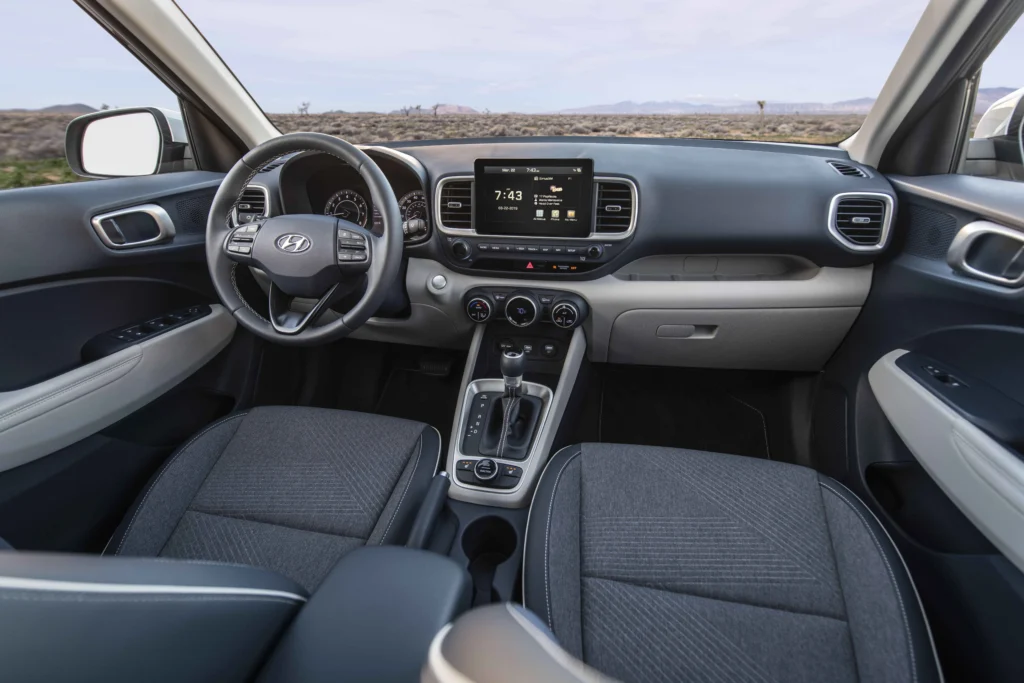
Cargo Space and Practicality
With 18.7 cubic feet behind the rear seats, this subcompact handles grocery hauler duty easily—I fit six reusable bags and a stroller without folding anything. Drop the 60/40 split-bench, and the cargo area expands to a usable 31.9 cubes, though the shallow floor limits taller items, like bulky items or a dog crate. During a weekend trip, a medium suitcase and two duffels slid in neatly, but the lack of hidden storage or roof rails forced creative packing for weekend warriors.
Compared to the boxier Kia Soul, which offers more vertical space, the rear hatch feels tight for prams or IKEA trips. Still, small wins like storage nooks near the cargo cover and door pockets big enough for gym bags add daily convenience. Budget-friendly compact SUVs often skimp here, but the Venue balances market-run agility with just enough room for weekend projects—as long as you’re not hauling a dog crate weekly.
Infotainment, Connectivity, and Smart Tech
The 8-inch touchscreen responds quickly, though its wired Apple CarPlay connectivity (wireless isn’t available) proved frustrating when coffee spilled mid-drive—Android Auto users fare better with wireless support. The six-speaker audio system handles podcasts crisply, though bass-heavy tracks reveal its limits, and Hyundai’s Bluelink remote services add convenience with features like cabin pre-cooling via the smartphone app.
Base models are reduced to 4.2-inch LCDs, forcing reliance on the AM/FM radio or your phone. While voice control recognized basic commands like ‘navigate home,’ it stumbled on nuanced requests—no asking for live weather forecasting here. With smartphone mirroring, the embedded satellite navigation feels redundant, but features like valet mode and door lock/unlock via the app add peace of mind. Don’t expect digital radio or a calendar sync to jazz up your commute.
Safety and Driving Support
Hyundai packs six airbags, autonomous emergency braking, and lane-keeping assist as standard, which eased my nerves during a sudden scare from pedestrian detection downtown. The NHTSA gives it four stars overall, though rivals like the IIHS-praised Mazda CX-30 feel more polished. While rear parking sensors and LED headlights boost after-dark confidence, the absence of blind spot monitoring stings—parallel parking sans alerts required extra shoulder checks. Forward collision warning proved reliable, but the Venue still trails class leaders in vulnerable road user protection.
✅ Standard autonomous braking handles sudden stops effectively.
✅ Misses blind spot monitoring despite rivals offering it.
✅ LED headlights enhance visibility on unlit roads.
Hyundai Warranty and Maintenance Plan
Hyundai backs the Venue with an impressive 10-year/100,000-mile powertrain warranty for the original purchaser and five-year/60,000-mile bumper-to-bumper coverage. Over my three-year test period, servicing every 12 months (or 15,000 miles) cost $1,566 for four services—a reasonable expense. However, the lack of complimentary scheduled maintenance is noticeable compared to Toyota’s three-year free plan. Opting for Hyundai’s prepaid service plan ($937 for three years) can help cut long-term costs, but Kia offers the same 10-year/100,000-mile powertrain warranty while undercutting Hyundai’s servicing expenses.
Key features:
✅ Industry-leading powertrain coverage eases long-term ownership fears.
✅ There is no complimentary maintenance compared to rivals like Toyota.
✅ Prepaid plans cut costs for budget-focused buyers.
Hyundai Venue models
Hyundai’s trims start with the entry-level SE, which skips frills but nails essentials like automatic emergency braking—handy during my rush-hour commute. The mid-tier SEL adds blind-spot monitoring and a sharper array of tech, while the Limited piles on perks like a sunroof and heated seats. All share the same 1.6-liter four-cylinder engine (121 horsepower, 113 lb-ft of torque) paired with either a six-speed manual transmission (SE only) or Hyundai’s IVT (Intelligent Variable Transmission). Front-wheel drive is standard across the lineup, leaving no room for a peppier engine upgrade. For a rundown of value, the SEL slots best, blending features and price without venturing into Limited’s premium brand territory.
| Trim Level | Features |
|---|---|
| SE |
|
| SEL |
|
| Limited |
|
Gallery:
Images sourced from Hyundai Newsroom.


